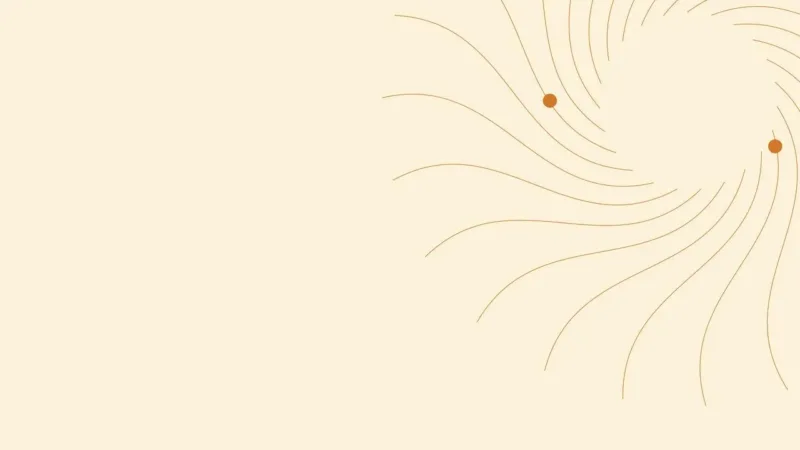Definition, background and legal research resources for attorneys
Legal terms • precedent • stare decisis
Stare decisis, meaning in Latin “to stand by things decided,” is a legal principle that directs courts to adhere to previous judgments — or judgments of higher or tribunals — as it has persuasive and binding authority while resolving a case with allegedly comparable facts.
There are horizontal and vertical components to the stare decisis concept. Absent extraordinary circumstances, a court that upholds the principle of “horizontal stare decisis” will follow its own earlier decisions (e.g., the Supreme Court follows a legal precedent unless it has become too difficult for lower courts to apply).
On the other hand, vertical stare decisis obligates lower courts to adhere strictly to rulings made by higher or appellate courts within the same jurisdiction as they have persuasive authority. For example, an appellate court must abide by decisions made by the U.S. Supreme Court, as it is the federal court of last resort with binding authority.
Jump to ↓
6 important implications of stare decisis
Notes of possible shortcomings
What is the difference between precedent and stare decisis?
More examples: Does the supreme court overturn precedents?
Stare decisis in the US
The English common law of the eighteenth century served as the foundation for the idea of stare decisis in American jurisprudence. The English jurist William Blackstone described the English common law precedent doctrine as establishing a strong presumption that judges would follow prior precedents, where the same issues arise in litigation, to promote legal stability, unless such precedents were blatantly absurd or unjust, in 1765.
The American Supreme Court defined the justification for stare decisis as follows in Kimble v. Marvel Enterprises (referenced in the screenshot below): “promot[ing] the even-handed, predictable, and consistent development of legal principles, foster[ing] reliance on judicial decisions, and contribute[ing] to the actual and perceived integrity of the judicial process.”
Justice’s opinion found on Westlaw Precision with CoCounsel
In Cooks v. State it was reiterated that ‘the rule of stare decisis is a wholesome one, it should not be used to sanctify and perpetuate error’. Courts, like individuals, but with more caution and deliberation, must sometimes reconsider what has been already carefully considered, and rectify their own mistakes.’
The stare decisis concept lessens the need for subsequent litigation and further saves the time and energy of the judiciary by preventing it from having to continually decide the same legal question or issue if it has already been decided in another case. It is frequently observed that there is a high potential for bias and arbitrary decision-making when it comes to legal matters. The doctrine of stare decisis forbids judges from acting arbitrarily or biasedly by requiring them to follow existing precedents, so preventing such unwelcome and vicious factors from interfering with fair and reasonable adjudication.
What is an example of stare decisis?
1. The Supreme Court applied precedent for insider trading in 2016
Salman v. the United States: Bassam Salman gained access to insider knowledge through his brother-in-law Maher Kara, who worked as an investment banker for Citigroup at the time, and used it to make an estimated $1.5 million.
The Supreme Court judge concluded that insiders do not necessarily need to receive something in return for disclosing business secrets, contrary to Salman’s attorney’s contention that he should only be found guilty if he paid his brother-in-law in cash or kind. Since Dirks v. SEC makes it apparent that a fiduciary obligation is broken when the secret information is offered as a gift, the confidential information given to Salman was deemed a gift based on stare decisis. Salman was consequently found accountable for insider trading.
2. Stare decisis invoked for a dispute between tenants and owner of apartments, but lacked true precedent
Richman Towers Tenants Assn Inc v Richman Towers LLC it was discussed that questions that are simply there in the record but are not brought to the court’s notice or decided upon are not to be regarded as precedent-setting decisions and doesnot have persuasive authority. The principle of stare decisis is never properly applied unless the precise issue has been considered and decided upon by the judicial mind in the case presented as precedent.
3. Stare decisis principles not applied in a case dealing with a death sentence
In State v. Peeler, ROGERS, C.J. concurred that he did not agree with the state’s argument that stare decisis rules should not apply in this particular case. It is undeniable that stare decisis is a fundamental self-governing principle within the judicial branch, which is entrusted with the delicate and difficult task of creating and maintaining a jurisprudential system that is not based upon an arbitrary discretion, even though he concurs that “stare decisis is a principle of policy and not a mechanical formula.”
Stare decisis assures that the law won’t just change randomly and allows society to assume that fundamental beliefs are based on the law rather than on people’s preferences.
6 important implications of stare decisis
- Stare decisis represents the idea that the appropriate rule of law must be decided, as opposed to having to be decided correctly.
- It fosters predictable, unbiased, and consistent development of legal principles, so the notion of Stare decisis is favored in judicial systems.
- It also increases reliance on judicial decisions and adds to the actual and perceived integrity of the judicial process.
- Stare decisis attempts to ensure that the public is directed by previously issued court decisions, through defined rules and principles, in its personal and professional interactions.
- The notion of stare decisis adheres to the application of decision-making in a consistent and specific manner, which in turn reflects in our legal culture. It is a prima facie presentation of the belief that such decision-making consistency has a normative value in and of itself.
- By allowing the public to assume that fundamental concepts are anchored in the law rather than in individual bias, the Doctrine of Stare Decisis contributes to the integrity of our legal system and the government in the areas of application and sustainability.
Notes of possible shortcomings
The stare decisis doctrine may result in the retention and spread of some instances that may have been incorrectly decided. Undoubtedly, there are cases where decisions have been made arbitrarily, and because of the doctrine of stare decisis, these cases will be given priority at the expense of a party that has been wronged. The stare decisis theory is also regarded as a philosophy that runs counter to democratic ideals because it gives unelected judges the power to enact law through their decisions.
The stare decisis concept has the potential to seriously impede the general advancement of the law. There must be some logical variation in the approach to the application of the law as society and its beliefs change and as required by each legal question. The doctrine is not static in nature and essentially reflects the idea of “one size fits all.” As a result, stare decisis may have a significant impact on how the law should be correctly interpreted in light of evolving cultural, social, economic, and other conditions.
What is the difference between precedent and stare decisis?
One acts as a model — a precedent, while stare decisis is a principle or rule that requires adherence to the model. Though it might be tempting to think they are synonyms, the terms do not signify the same thing.
Precedent and stare decisis in the case of a lender and borrower
Let’s say there’s a dispute between two individuals, A and B.
- A gave B a certain sum of money with the understanding that she would repay it at a particular date.
- B has defaulted on her obligation and is being uncooperative.
- A is adamant that B repay her and that she additionally pay interest on the long-overdue amount.
This case may be used as a precedent in related cases in the future if they both end up at the Supreme Court and the presiding judge rules that B must pay back her debt but without additional interest. By applying stare decisis, the ensuing precedent will be protected.
To put it another way, the Supreme Court is required by the principle of stare decisis to refer to the A v. B case as a precedent when deciding future cases between a lender and borrower in which the borrower refuses to repay (horizontal stare decisis). Additionally, since the Supreme Judicial decided the case, subordinate courts that are part of the same court system would consider it a precedent.
Does the supreme court overturn precedents?
In Dobbs v. Jackson Women’s Health Organization, the U.S. Supreme Court overturned Roe v. Wade and Casey, ruling that abortion is not one of the personal freedoms guaranteed by the Federal Constitution and relegating the decision to state legislators on abortion laws. It upheld a Mississippi law that forbids abortions beyond 15 weeks of gestation — with exceptions for life and health — which is before the time when a fetus is now typically regarded as “viable” outside the womb.
“The Constitution does not grant a right to abortion. Roe and Casey must be overturned, and the people and their elected officials must once again have the power to control abortion. The court considered whether the doctrine of stare decisis warranted the continued acceptance of Roe and Casey. Starting with the proposition that stare decisis ‘is not an inexorable command‘
and;
“is at its weakest when we interpret the Constitution,” the court noted that in matters of constitutional interpretation “we place a high value on having the matter settled right,” such that “in appropriate circumstances we must be willing to reconsider and, if necessary, overrule constitutional decisions.”
Source: National Library of Medicine
Similarly, the landmark judgement of 1954 Brown vs Board of Education, overruled against the longstanding ‘separate but equal’ doctrine established in Plessy v. Ferguson (1896), which permitted legalized segregation. The judgement declared that ‘separate educational facilities are inherently unequal’ while recognizing that segregation inflicted harm upon African American children, denying them equal educational opportunities.
The recent Supreme Court decision in Loper Bright Enterprises v. Raimondo ended Chevron deference, which once required courts to defer to federal agencies’ interpretations of ambiguous laws. Now, courts have more power to interpret statutes independently, even if agencies disagree. However, previous cases decided under Chevron deference remain upheld under the principle of “statutory stare decisis.”
By the principle of stare decisis, the Supreme Court upholds precedent unless there is a “particular rationale” or at the very least “strong grounds” to do otherwise. By choosing this strategy, the Court has rejected a more formalistic interpretation of stare decisis that would have required it to uphold its earlier rulings regardless of their merits or the real-world effects of upholding or overturning precedent.
The Court, however, views the principle of stare decisis as a discretionary “principle of policy” that must be weighed and balanced along with its opinions on the merits of the prior decision and several practical considerations when deciding whether to retain precedent in interpreting the Constitution or whether to hear a case. The Court has stated that its precedents are entitled to respect and deference. If the Court can separate the law or facts of a prior decision from the case in front of it or, instead, limit the holding of the prior decision so that it is inapplicable to the current case, it may be able to avoid having to decide whether to overrule precedent.
More research resources
The following resources from Practical Law and Westlaw may be useful for further research about related terms and legal matter, including cases and statutes.
- Statutory Interpretation: Overview ↗
- Glossary: Stare Decisis ↗
- Interns, Trainees, and Volunteers Under the FLSA ↗
- Patent Litigation: Claim Construction Considerations Checklist (Accused Infringer)↗
- Patent Litigation: Claim Construction Considerations (Accused Infringer) ↗
- Patent Litigation: Claim Construction Considerations (Patent Owner) ↗











